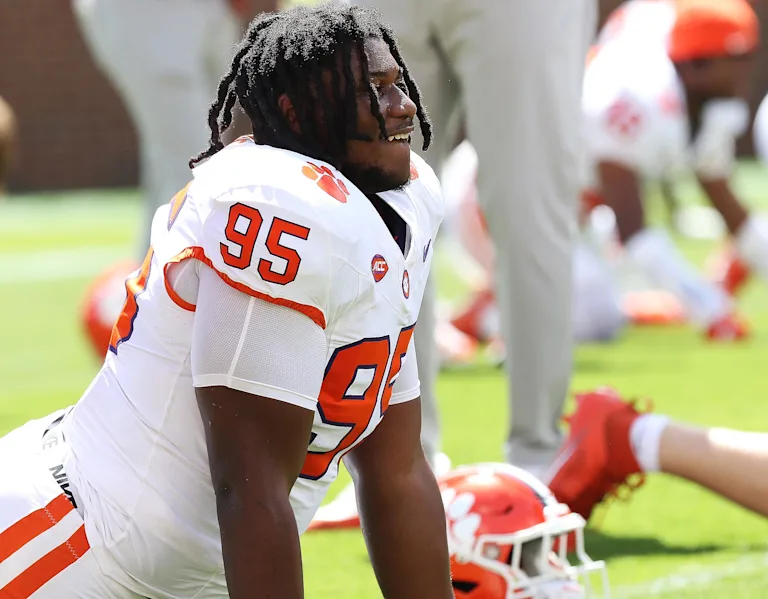As the Clemson Tigers football program wraps up its spring practices, the coaching staff and players find themselves at a pivotal crossroads that will shape the trajectory of the upcoming season. Spring ball, a period often marked by evaluation, adjustment, and preparation, is more than just a time for conditioning and installation of new schemes; it serves as a critical juncture for decision-making that can impact roster composition, depth chart hierarchy, and the developmental trajectory of key players. With summer workouts looming and fall camp quickly approaching, the Tigers must navigate a host of crucial choices that will define their readiness and competitive edge for the 2025 season.
Clemson’s recent history of sustained success under head coach Dabo Swinney sets a high bar and an expectation for excellence. The Tigers have become synonymous with elite recruiting, strategic innovation, and the cultivation of NFL-caliber talent. However, even a program of Clemson’s stature faces ongoing challenges, especially when it comes to evaluating a mix of experienced veterans, returning contributors, and incoming freshmen. Spring practices provide a vital testing ground where these evaluations can be made in real time, but the true decisions must be made as the program shifts into the more intense phases of summer conditioning and fall camp drills.
One of the most critical areas requiring attention is the quarterback position. Clemson has long benefited from strong leadership and high-level performance at the helm, which often sets the tone for the entire offense. As spring drills wind down, the coaching staff must determine not only who will lead the team but also what style of play will best exploit the talents of the quarterback and his supporting cast. This involves weighing the skill sets of returning quarterbacks against potential transfers or freshmen who have shown promise in practice sessions. The decision is not merely about who has the strongest arm or quickest release but who commands the huddle, executes under pressure, and adapts quickly to in-game adjustments. The chosen quarterback will also influence play-calling strategies, receiver roles, and offensive line protection schemes, making this decision one of the most far-reaching in the team’s preparation.
Beyond the quarterback, the offensive unit as a whole demands significant evaluation. The Tigers are often judged by their ability to maintain a balanced attack—one that combines a powerful rushing game with a dynamic passing offense. In spring practices, the offensive line takes center stage, as cohesion and technique among the blockers can make or break both the running and passing games. Determining the starting five on the offensive line is a process filled with intense competition, especially when younger players emerge and challenge established veterans. This competition is healthy for the program but also requires careful management by the coaching staff to ensure the best five players start while maintaining depth for injury contingencies. How the offensive line shapes up will influence not only protection schemes but also the team’s ability to control the clock and impose its will on opponents.
Similarly, skill positions such as running backs and wide receivers require thorough evaluation. Clemson’s offense often thrives on speed, agility, and versatility, so the coaching staff must assess which players possess the ideal combination of physical talent and football intelligence. This includes identifying who excels in open-field running, blocking in pass protection, and creating separation from defenders in route running. Special teams also benefit from this assessment since many skill players contribute in kickoff and punt return roles. The late-spring decisions here can impact the overall offensive efficiency and explosiveness, which are crucial against high-caliber competition in the ACC and beyond.
On the defensive side of the ball, Clemson has traditionally emphasized speed, aggression, and disciplined execution. The defensive staff faces its own set of challenges, particularly when it comes to positioning players where they can maximize their strengths. The linebacker corps, for example, often serves as the heartbeat of the defense—responsible for run-stopping, pass coverage, and quarterback pressure. Spring practices offer a chance to evaluate who among the returning players and newcomers can take on leadership roles and fill key responsibilities. Defensive backs are another focal point, as the Tigers seek to maintain a secondary capable of neutralizing opposing receivers and forcing turnovers. Deciding the right mix of cornerbacks and safeties, including how to deploy nickel and dime packages, is critical for adapting to modern offenses that emphasize passing.
Defensive line play remains a priority as well. Effective pressure on the quarterback and stout run defense are pillars of Clemson’s defensive philosophy. Spring drills highlight players’ ability to win one-on-one matchups, shed blocks, and maintain gap integrity. Late-spring decisions about starters and rotational players in the trenches will have a ripple effect throughout the defensive game plan, as well as impact stamina and injury management over the course of the long season.
Special teams, while sometimes overlooked, can be a decisive factor in close games and must be carefully managed. The selection of reliable kickers, punters, and return specialists requires evaluating not just physical skill but mental toughness and consistency. Spring practices allow coaches to observe how these players perform under pressure and make late-spring decisions that ensure dependable contributions from the special teams unit.
Off the field, the late-spring period also demands attention to player development beyond physical skills. Strength and conditioning programs intensify in the summer, and players who have shown promise in spring must be committed to rigorous offseason training regimens. Mental preparation, including film study, playbook mastery, and leadership development, is equally essential. The coaching staff’s ability to motivate and hold players accountable during the summer can significantly affect how smoothly the team transitions into fall camp.
Roster management is another crucial consideration. The late-spring evaluation process may reveal areas where the team needs additional depth or positional reinforcement, potentially leading to targeted recruiting efforts or transfers. Conversely, it might also identify players who are not progressing as hoped, resulting in difficult decisions about redshirting, position changes, or even roster cuts. Balancing the development of young talent with the immediate needs of the team requires a strategic vision and close communication among coaches, players, and support staff.
The timing of late-spring decisions is important because they set the tone for summer workouts, where physical conditioning and skill refinement occur at an accelerated pace. Players chosen as starters or significant contributors must use the summer to build strength, improve conditioning, and refine their technique to be ready for the physical and mental demands of fall camp. For others, summer workouts offer a chance to climb the depth chart or solidify their roles. Coaches use this period to monitor progress closely, adjusting training plans and addressing weaknesses exposed during spring practices.
Fall camp, the final preparatory stage before the season kickoff, places a premium on execution and consistency. The groundwork laid during spring and summer is tested under the intense scrutiny of game-like scenarios, live scrimmages, and situational drills. Players who have embraced the offseason regimen typically show marked improvements in stamina, awareness, and teamwork. Conversely, those who have struggled with consistency or injuries during the offseason may find themselves facing tougher competition for playing time. The coaching staff must balance pushing players to reach peak performance while managing the risk of injury in this high-intensity environment.
One of the defining characteristics of Clemson’s program is its adaptability. Late-spring decisions frequently involve tactical shifts designed to exploit opponents’ weaknesses or to compensate for personnel changes. The Tigers’ coaching staff may choose to tweak offensive formations, introduce new defensive coverages, or emphasize different aspects of special teams play based on the roster evaluations. These tactical adjustments reflect the program’s commitment to innovation and competitive excellence, which have been key to its recent national prominence.
Leadership is another key consideration during this crucial late-spring period. Identifying team captains and informal leaders among the players can galvanize the locker room and provide a strong foundation of accountability and motivation. Veterans who have earned the respect of teammates and coaches often take on mentoring roles for younger players, helping them navigate the rigors of college football life both on and off the field. The cultivation of leadership during spring practices and summer workouts can significantly influence team chemistry and resilience over the course of a demanding season.
Finally, the mental and emotional readiness of the team cannot be underestimated. The transition from offseason workouts to competitive play is a psychological as well as a physical challenge. Late-spring decisions often involve conversations about mindset, confidence, and focus, helping players align their individual goals with the collective mission of the team. Building a culture of resilience and unity during this period helps prepare Clemson for the inevitable highs and lows of a competitive football season.
In summary, the Clemson Tigers football program stands at a crucial crossroads as it moves beyond spring practices toward summer workouts and fall camp. The decisions made during this period are multifaceted, involving player evaluations, positional battles, roster management, tactical adjustments, and leadership identification. These choices will influence not only the team’s immediate competitiveness but also its long-term development and ability to sustain success. With the legacy of excellence and high expectations surrounding the program, the pressure to make the right calls is intense. However, Clemson’s history of strategic foresight, player development, and adaptability provides a strong foundation to meet these challenges. As summer workouts ignite and fall camp approaches, all eyes will be on the Tigers as they prepare to embark on another season in pursuit of ACC dominance and national championship aspirations.



